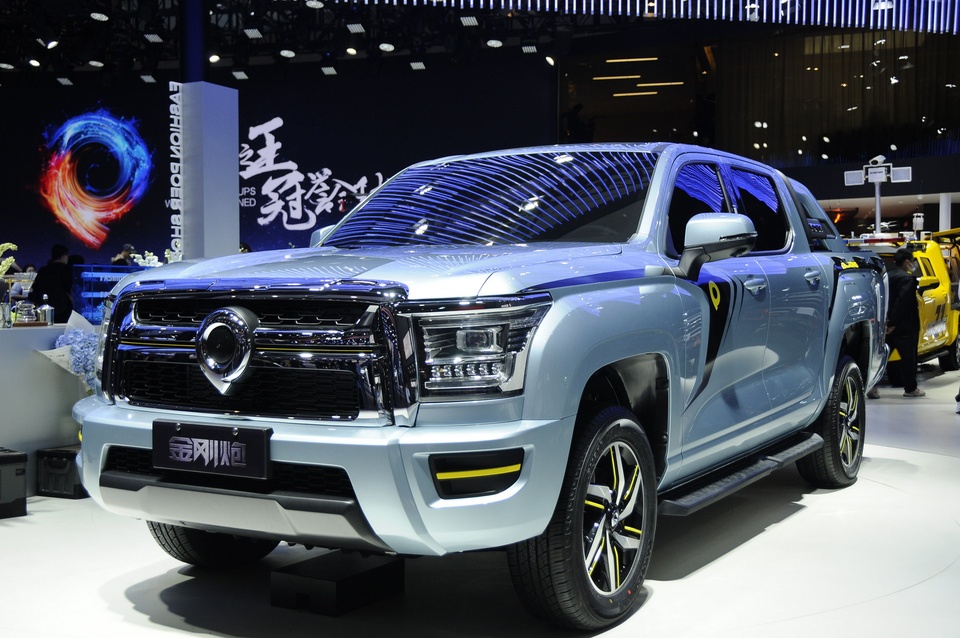
|
Great Wall Motors (GWM) has come a long way since its early days of “copying” Japanese automakers like Mazda and Toyota. Over the years, they have rapidly developed and established themselves as a leading name in China’s automotive industry. With ambitions to expand their global market share, Europe became a key target for GWM, just like many of their domestic rivals.
However, after nearly three years of campaigning in the European market, GWM seems to have encountered challenges and is now shifting their focus elsewhere to continue their expansion plans. In November 2021, GWM announced the opening of its branch in Germany, with a headquarters in Munich serving as the development center for the entire European market. The following year, they partnered with Emil Frey, Europe’s largest car distributor, to bring their electric vehicle brands, Ora and Wey, to European customers. Since then, GWM, together with Emil Frey and other European partners, has been supplying electric and plug-in hybrid vehicles to customers in Germany, the UK, Ireland, Sweden, and Israel.
|
|
|
GWM’s business performance in Europe fell short of expectations. Image: GWM. |
GWM was initially optimistic about their prospects in Europe. In 2019, the company’s chairman, Wei Jianjun, expressed intentions to establish a car production base in Europe if they achieved sales of 50,000 units in the region. This goal didn’t seem far-fetched, considering GWM’s global sales performance. In 2023, the company sold 1.23 million vehicles worldwide, with 316,018 units sold in markets outside of China, contributing almost 25.7% of their total sales.
However, Europe’s contribution to these impressive sales figures was minimal. Reports indicate that only about 6,300 new GWM vehicles were registered and on the roads in Europe in 2023. This underwhelming performance may have contributed to GWM’s recent decision to reduce their resources in the region. According to Germany’s Manager Magazin, GWM has informed its employees and business partners that it will be closing its Munich headquarters by the end of August. This move will result in the loss of jobs for around 100 employees, including Steffen Cost, the company’s commercial director.
|
|
|
GWM’s Munich headquarters will be closed in August. Image: GWM. |
While the closure of the Munich headquarters signals a shift in strategy, GWM is not completely withdrawing from the European market. Customers in Europe will still have access to their products and after-sales services, but the business operations will now be managed directly from their headquarters in Baoding, Hebei Province, China. Xu Lin, CEO of GWM Netherlands, affirmed that the closure of the Munich headquarters is part of GWM’s strategic adjustment in the European market and their preparation to enter new markets.
Shifting Focus to Southeast Asia
Almost simultaneously with their foray into Europe, GWM made a strategic move into Southeast Asia in February 2020 by acquiring General Motors’ production facility in Thailand after the American automaker exited the region. With this acquisition, GWM aimed for an annual production capacity of 80,000 units to serve the Thai market and export vehicles to Australia, South Africa, and other Southeast Asian countries.
According to GWM, their Rayong plant in Thailand is the company’s second-largest production base outside of China, after Brazil. Approximately 60% of the output from this plant is dedicated to the Thai market, while the remaining 40% is exported to other countries. Last year, GWM officially entered the Vietnamese market with their Haval brand, launching the Haval H6 as their debut model. With this move, Vietnam became the seventh market for the Chinese automotive group in Southeast Asia, following Thailand, Malaysia, Laos, Cambodia, the Philippines, and Brunei.
|
|
|
GWM’s Rayong plant in Thailand is one of their key production hubs. Image: GWM. |
In 2023, GWM sold 13,039 units in Thailand, ranking fourth among Chinese brands operating in the country’s automotive market. This success in Thailand is likely a key reason why GWM remains committed to their investments in the country, despite their recent adjustments in Europe. In Vietnam, the level of success for GWM’s Haval brand remains uncertain. The company briefly entered the market in 2022 but withdrew after only six months. In their recent re-entry, GWM has chosen not to disclose sales figures for the Haval H6 but has adjusted its pricing strategy, reducing the price from 1.096 billion VND to 986 million VND earlier this year. A new Haval showroom is set to open in Ho Chi Minh City this June, but the overall dealership network remains sparse compared to Japanese and Korean brands.
Looking ahead, the Haval brand is expected to introduce the Haval Jolion SUV to the Vietnamese market, positioning it in the highly competitive B-SUV segment. With dimensions of 4,472 mm in length, 1,841 mm in width, 1,574 mm in height, and a wheelbase of 2,700 mm, the Haval Jolion will offer one of the most spacious options in its class. Pricing for this model has not yet been revealed, but it is expected to fall in the range of 650-700 million VND.
|
|
|
The Haval Jolion is the next model to be introduced by GWM’s Haval brand in Vietnam. Image: GWM. |
Following GWM’s latest move in Europe, it appears that Vietnam and Southeast Asia, in general, will become a new investment focus for the Chinese automotive giant. However, the extent of their investment and commitment to the region remains to be seen and will be tested in the future. Overall, while Chinese car quality has improved significantly in recent years, a combination of objective and subjective factors raises questions about the potential success of GWM’s Haval brand in the Vietnamese market.
Recommended Reads for Your Next Journey
Our “Xe” section offers a selection of captivating books with diverse themes to engage our readers during their travels. Whether it’s a moment of relaxation or a break from your journey, these books are sure to be delightful companions.











































